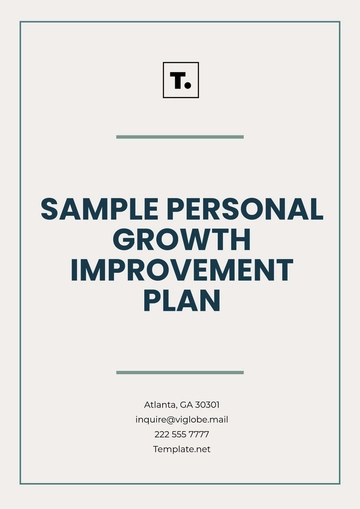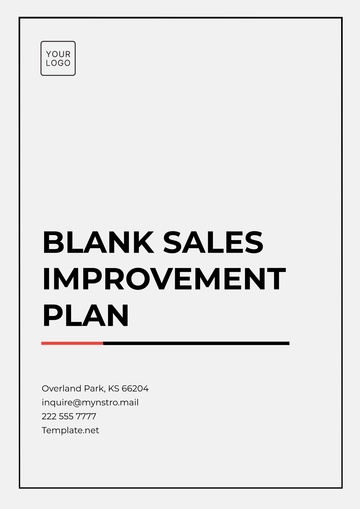Free Aesthetic Community Health Improvement Plan

Prepared by:
[YOUR NAME]
[YOUR COMPANY NAME]
Introduction
Aesthetic community health focuses on enhancing the visual, environmental, and cultural elements of a community to foster better well-being and health outcomes. This plan aims to integrate aesthetic aspects such as art, green spaces, public infrastructure, and local culture into health promotion strategies. By creating spaces that are visually appealing and connected to community values, this approach can encourage healthier lifestyles, increase social interaction, and reduce stress among residents.
Vision and Goals
Vision Statement
To create a community where aesthetic improvements enrich the physical, mental, and social health of residents, promoting a holistic approach to well-being through art, nature, and meaningful public spaces.
Goals
Improve Public Spaces: Transform public spaces into visually stimulating and functional areas that promote physical activity and relaxation.
Enhance Mental Well-being: Use art, nature, and design to reduce stress, and anxiety, and improve overall mental health.
Foster Social Cohesion: Encourage community involvement through aesthetic projects that connect residents with their environment and each other.
Promote Healthy Lifestyles: Design public spaces that encourage walking, cycling, and other forms of physical activity, contributing to healthier lifestyles.
Strategic Initiatives
1. Urban Green Spaces
Action: Convert unused urban areas into green parks, gardens, and recreational zones, featuring walking trails, playgrounds, and outdoor exercise equipment.
Expected Outcomes: Increased physical activity, reduced stress, enhanced social interaction, and better air quality.
Timeline: Phase 1: 6 months to assess land and planning; Phase 2: 1-2 years for implementation.
2. Community Art Installations
Action: Commission local artists to create murals, sculptures, and interactive installations in high-traffic areas like bus stops, parks, and community centers.
Expected Outcomes: Increased community pride, a sense of belonging, and mental health benefits from visual stimulation.
Timeline: Ongoing with annual art festivals or exhibitions.
3. Beautification of Infrastructure
Action: Improve the aesthetic quality of public buildings, streets, and transportation hubs through thoughtful design, vibrant colors, and the incorporation of green architecture.
Expected Outcomes: Increased sense of community pride and well-being through more pleasant and accessible public spaces.
Timeline: Phase 1: 1 year for initial designs; Phase 2: Ongoing as new projects develop.
4. Cultural Events and Festivals
Action: Organize events such as outdoor concerts, theater performances, and seasonal festivals that emphasize local culture, art, and the natural environment.
Expected Outcomes: Increased social engagement, reduced isolation, and enhanced community health through collective participation.
Timeline: Initial planning: 6 months; first event: within 1 year.
5. Health-Focused Design in Public Spaces
Action: Integrate health-conscious design features into urban planning, such as more walking paths, bike lanes, fitness stations, and shaded rest areas.
Expected Outcomes: Encouraging physical activity, reducing sedentary lifestyles, and improving overall community health.
Timeline: Phase 1: 1 year for research and planning; Phase 2: Ongoing development with local city planning.
Community Involvement and Partnerships
Stakeholder Engagement
Collaborate with local artists, urban planners, environmental groups, and health organizations to ensure the aesthetic improvements align with both community values and health objectives.
Regularly engage with residents through surveys, town hall meetings, and focus groups to gather feedback and ensure their needs are being met.
Partnerships
Work with local health clinics, schools, and businesses to integrate health education into aesthetic projects.
Establish partnerships with environmental NGOs to ensure sustainability and eco-friendly design in all projects.
Evaluation and Impact Assessment
Metrics for Success
Community Health Improvements: Monitor changes in physical and mental health indicators, such as increased physical activity levels, reduced stress, and improved mental health metrics.
Community Engagement: Track attendance and participation in community events, including art installations and local festivals.
Aesthetic Satisfaction: Conduct surveys to measure the community’s satisfaction with new green spaces, art installations, and public infrastructure enhancements.
Feedback and Adaptation
Regularly collect feedback from the community to assess the effectiveness of the aesthetic health initiatives.
Make adjustments based on feedback and health data to continuously improve the plan's impact.
Conclusion
The Aesthetic Community Health Improvement Plan is an innovative approach to community health, recognizing that visual and environmental factors play a key role in well-being. Through thoughtful design, artistic expression, and the enhancement of public spaces, this plan aims to create a healthier, more connected, and aesthetically pleasing community that encourages both physical and mental health. By involving the community in the process and measuring success through clear, health-related outcomes, this plan will contribute to a more vibrant and resilient community.
- 100% Customizable, free editor
- Access 1 Million+ Templates, photo’s & graphics
- Download or share as a template
- Click and replace photos, graphics, text, backgrounds
- Resize, crop, AI write & more
- Access advanced editor
The Aesthetic Community Health Improvement Plan Template from Template.net is fully editable and customizable to enhance community well-being. Tailor the plan to address specific health goals and initiatives. Editable in our AI Editor Tool, this template offers a flexible, personalized approach to improving public health, promoting wellness, and fostering a healthier community.
You may also like
- Finance Plan
- Construction Plan
- Sales Plan
- Development Plan
- Career Plan
- Budget Plan
- HR Plan
- Education Plan
- Transition Plan
- Work Plan
- Training Plan
- Communication Plan
- Operation Plan
- Health And Safety Plan
- Strategy Plan
- Professional Development Plan
- Advertising Plan
- Risk Management Plan
- Restaurant Plan
- School Plan
- Nursing Home Patient Care Plan
- Nursing Care Plan
- Plan Event
- Startup Plan
- Social Media Plan
- Staffing Plan
- Annual Plan
- Content Plan
- Payment Plan
- Implementation Plan
- Hotel Plan
- Workout Plan
- Accounting Plan
- Campaign Plan
- Essay Plan
- 30 60 90 Day Plan
- Research Plan
- Recruitment Plan
- 90 Day Plan
- Quarterly Plan
- Emergency Plan
- 5 Year Plan
- Gym Plan
- Personal Plan
- IT and Software Plan
- Treatment Plan
- Real Estate Plan
- Law Firm Plan
- Healthcare Plan
- Improvement Plan
- Media Plan
- 5 Year Business Plan
- Learning Plan
- Marketing Campaign Plan
- Travel Agency Plan
- Cleaning Services Plan
- Interior Design Plan
- Performance Plan
- PR Plan
- Birth Plan
- Life Plan
- SEO Plan
- Disaster Recovery Plan
- Continuity Plan
- Launch Plan
- Legal Plan
- Behavior Plan
- Performance Improvement Plan
- Salon Plan
- Security Plan
- Security Management Plan
- Employee Development Plan
- Quality Plan
- Service Improvement Plan
- Growth Plan
- Incident Response Plan
- Basketball Plan
- Emergency Action Plan
- Product Launch Plan
- Spa Plan
- Employee Training Plan
- Data Analysis Plan
- Employee Action Plan
- Territory Plan
- Audit Plan
- Classroom Plan
- Activity Plan
- Parenting Plan
- Care Plan
- Project Execution Plan
- Exercise Plan
- Internship Plan
- Software Development Plan
- Continuous Improvement Plan
- Leave Plan
- 90 Day Sales Plan
- Advertising Agency Plan
- Employee Transition Plan
- Smart Action Plan
- Workplace Safety Plan
- Behavior Change Plan
- Contingency Plan
- Continuity of Operations Plan
- Health Plan
- Quality Control Plan
- Self Plan
- Sports Development Plan
- Change Management Plan
- Ecommerce Plan
- Personal Financial Plan
- Process Improvement Plan
- 30-60-90 Day Sales Plan
- Crisis Management Plan
- Engagement Plan
- Execution Plan
- Pandemic Plan
- Quality Assurance Plan
- Service Continuity Plan
- Agile Project Plan
- Fundraising Plan
- Job Transition Plan
- Asset Maintenance Plan
- Maintenance Plan
- Software Test Plan
- Staff Training and Development Plan
- 3 Year Plan
- Brand Activation Plan
- Release Plan
- Resource Plan
- Risk Mitigation Plan
- Teacher Plan
- 30 60 90 Day Plan for New Manager
- Food Safety Plan
- Food Truck Plan
- Hiring Plan
- Quality Management Plan
- Wellness Plan
- Behavior Intervention Plan
- Bonus Plan
- Investment Plan
- Maternity Leave Plan
- Pandemic Response Plan
- Succession Planning
- Coaching Plan
- Configuration Management Plan
- Remote Work Plan
- Self Care Plan
- Teaching Plan
- 100-Day Plan
- HACCP Plan
- Student Plan
- Sustainability Plan
- 30 60 90 Day Plan for Interview
- Access Plan
- Site Specific Safety Plan




























